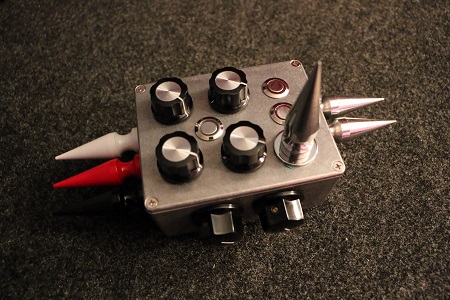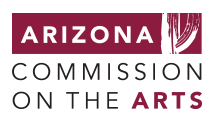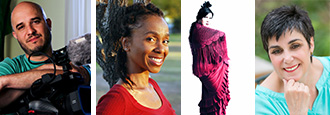“I am interested in Xicano Rasquache and Native American Adaptive Reuse traditions as innovation spaces. These indigenous traditions are characterized as the appropriation, adaptive reuse, recycling, hacking, circuit-bending, and systems modifications of pervasive foreign technologies and literacies.”
Cristóbal Martínez is a recipient of a 2016 Artist Research & Development Grant.
Artist Research and Development Grants are designed to support the advancement of artistic research, aid in the development of artistic work and recognize the contributions individual artists make to Arizona’s communities. For more information about the Artist Research & Development Grant, click here.

Led by Cristóbal Martínez, Radio Healer applies Xicano rasquache and Native American adaptive reuse traditions to the design of indigenous electronic musical instruments and tools for audio and visual expression. Constructed through processes of hacking and modifying, these instruments are a practice of indigenous knowledge traditions for creating tools. These traditions demonstrate appropriations and adaptations of foreign cultural artifacts and materials, as well as the use of local materials to innovate a culturally-responsive ecology of functional and aesthetic technologies based on the group’s indigenous worldview. Radio Healer uses these tools to create live immersive performances of video and sound that provide publics with opportunities to engage the world, in a heightened sense of criticality, about the systems we create, use, maintain, and adapt.
Now in its twelfth year, Radio Healer will use the Artist Research and Development Grant to build electronic musical instruments that are more technically sophisticated than what they have built in the past, and to acquire an audio amplification system that supports outdoor performances.
 In his application, Martínez described the objective of Radio Healer: “Our goal is to cultivate the emergence of new indigenous frameworks and theories that help contribute toward the creation/control of meaning and the practice of culture (indigenous re-imagined ceremony) by indigenous peoples through media.”
In his application, Martínez described the objective of Radio Healer: “Our goal is to cultivate the emergence of new indigenous frameworks and theories that help contribute toward the creation/control of meaning and the practice of culture (indigenous re-imagined ceremony) by indigenous peoples through media.”
Martínez directs Radio Healer and works with Randy Kemp, Raven Kemp, and Edgar Cardenas to conceptualize and perform Radio Healer. Together, all of the artists design and build electronic musical instruments, as well as compose and produce visual and sonic media for performances.
Martínez is an artist-scholar whose work extends from his Northern New Mexican Mestizo roots. As an artist-scholar his work is grounded in deep technical, rhetorical, and aesthetic knowledge for positioning metaphors through the composition, installation, and performance of conceptual art. In weaving his art and scholarship together, Martínez engages publics in inquiry and deliberation on pressing issues such as socio-economic inequities, structural racism, building public memory, the increasing velocities of media, digital media and learning, environmental degradation, and indigenous sovereignty.
Central to his work, Martínez collaborates as a member of inter-cultural Chicana/o and Native American interdisciplinary collectives. These learning communities generate conceptual artworks that encode North American indigenous values and produce co-intentional culturally-responsive research. He is a member of the indigenous artist collectives Postcommodity, Burning Wagon, and Radio Healer, and a former National Science Foundation Graduate Research Assistant at Arizona State University. His work has been published, presented, exhibited, and performed throughout North America, Europe, Australia, and in Africa. Martínez recently completed his doctorate in Rhetoric, Composition and Linguistics at Arizona State University, where he is currently a Postdoctoral Fellow at the Herberger Institute for Design and the Arts, and the Mary Lou Fulton Teachers College.
On Friday, October 28, 2016, Radio Healer will perform Animal Mother Moves the Four Winds of Rush Hour at the Pueblo Grande Museum. Admission is free and open to the public. Click here to learn more.






